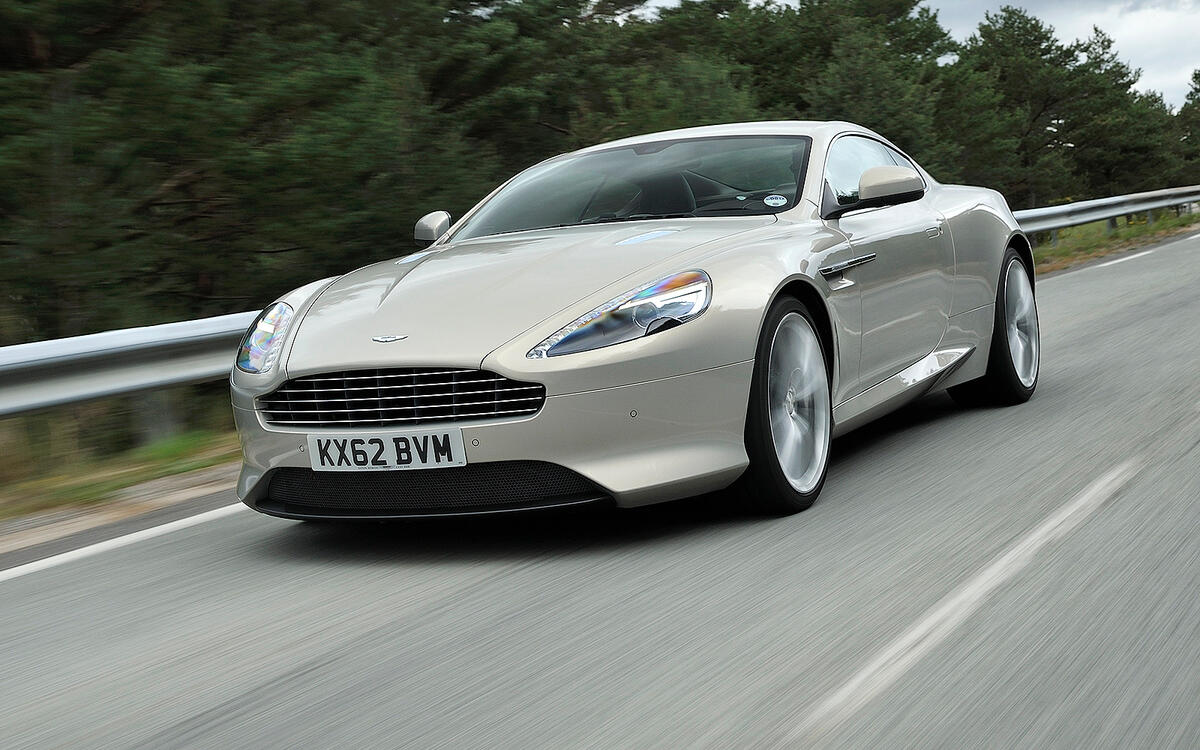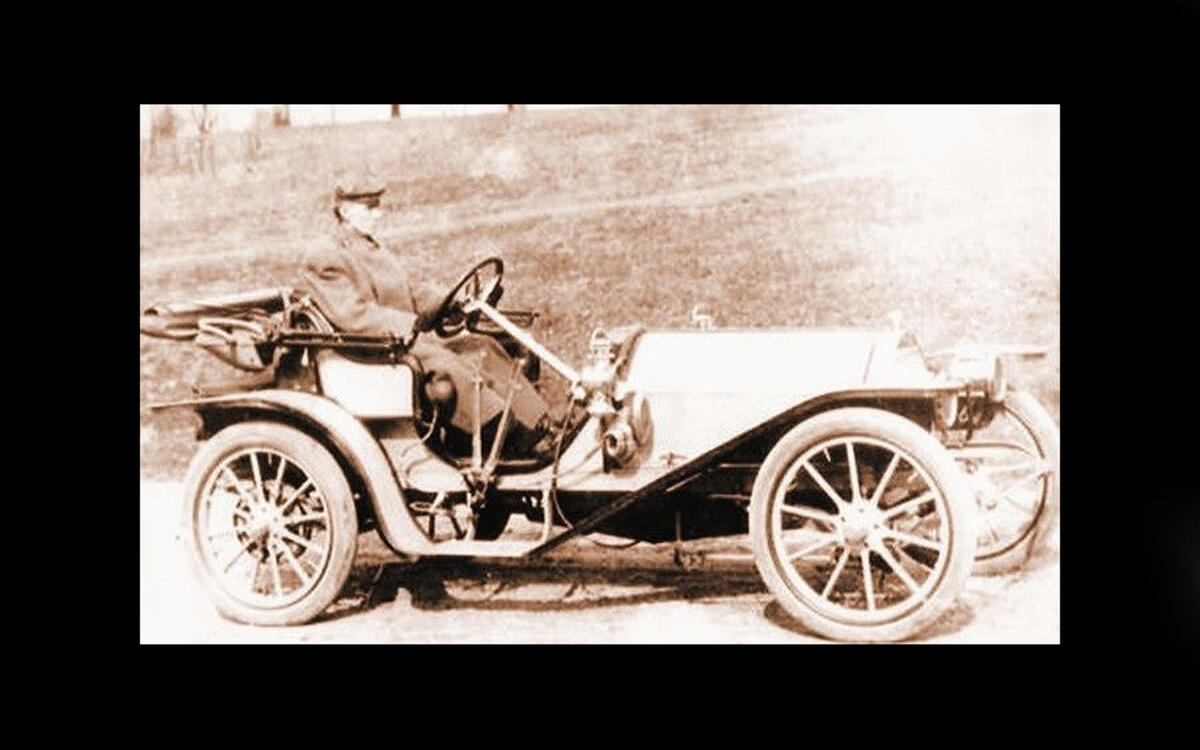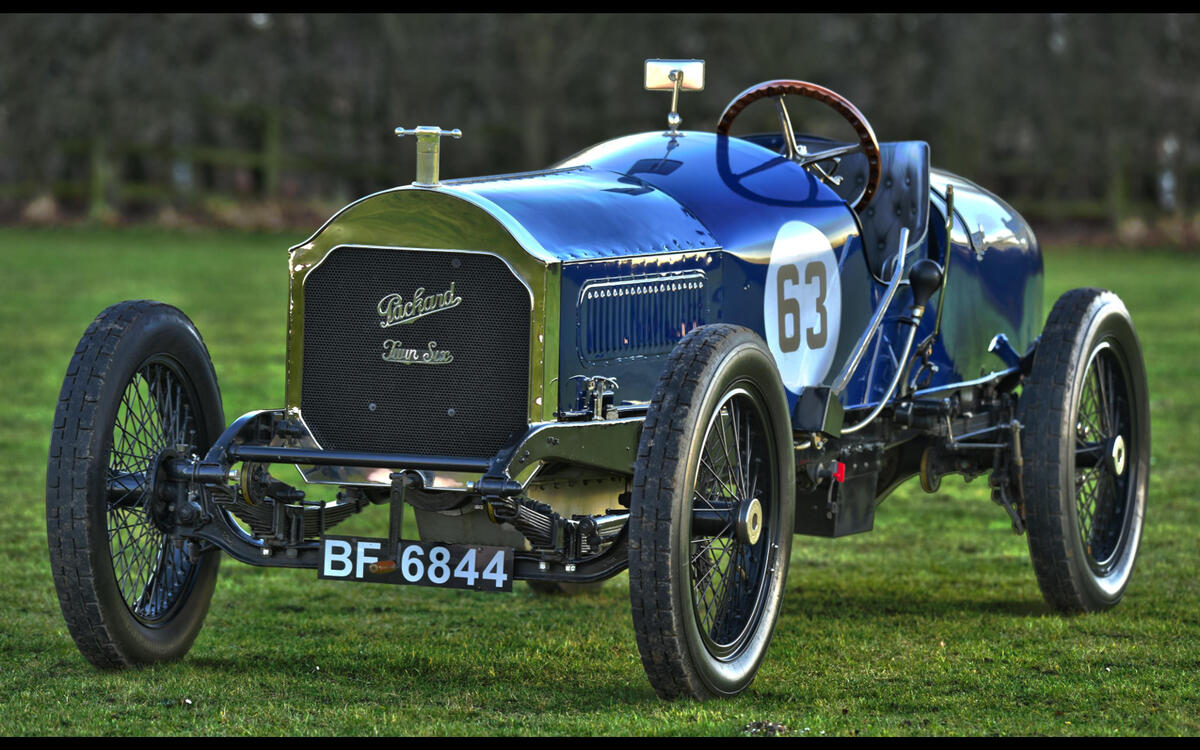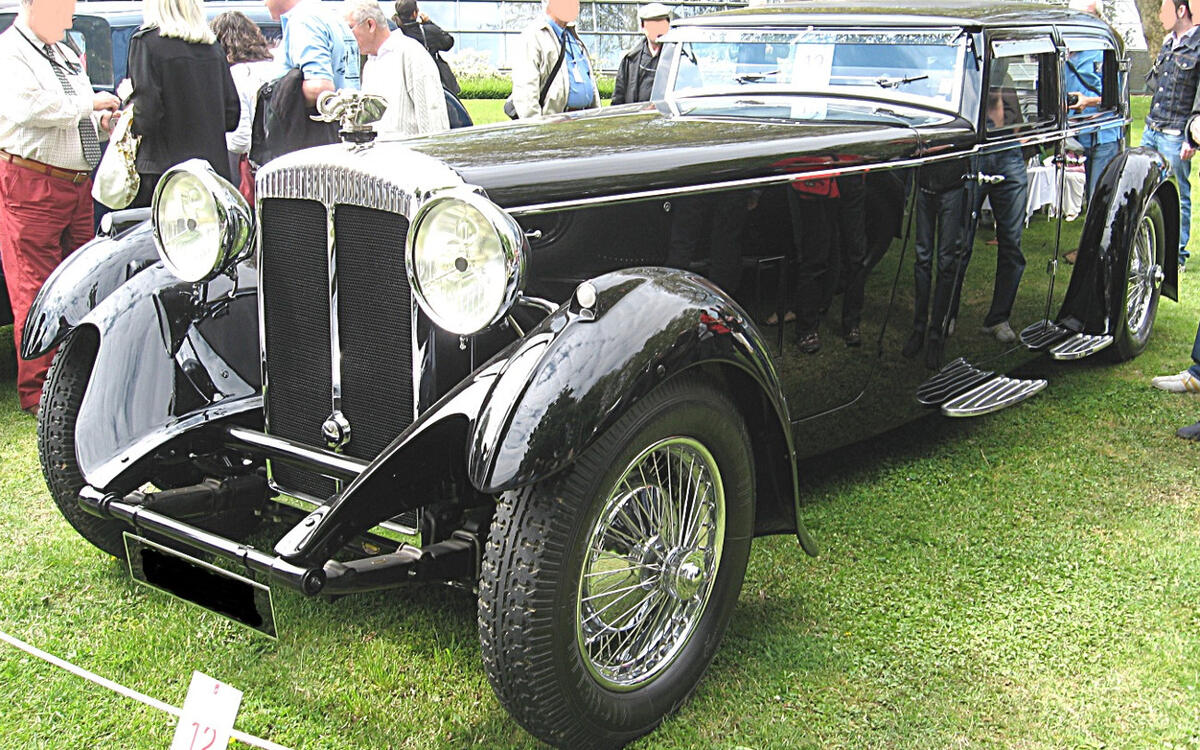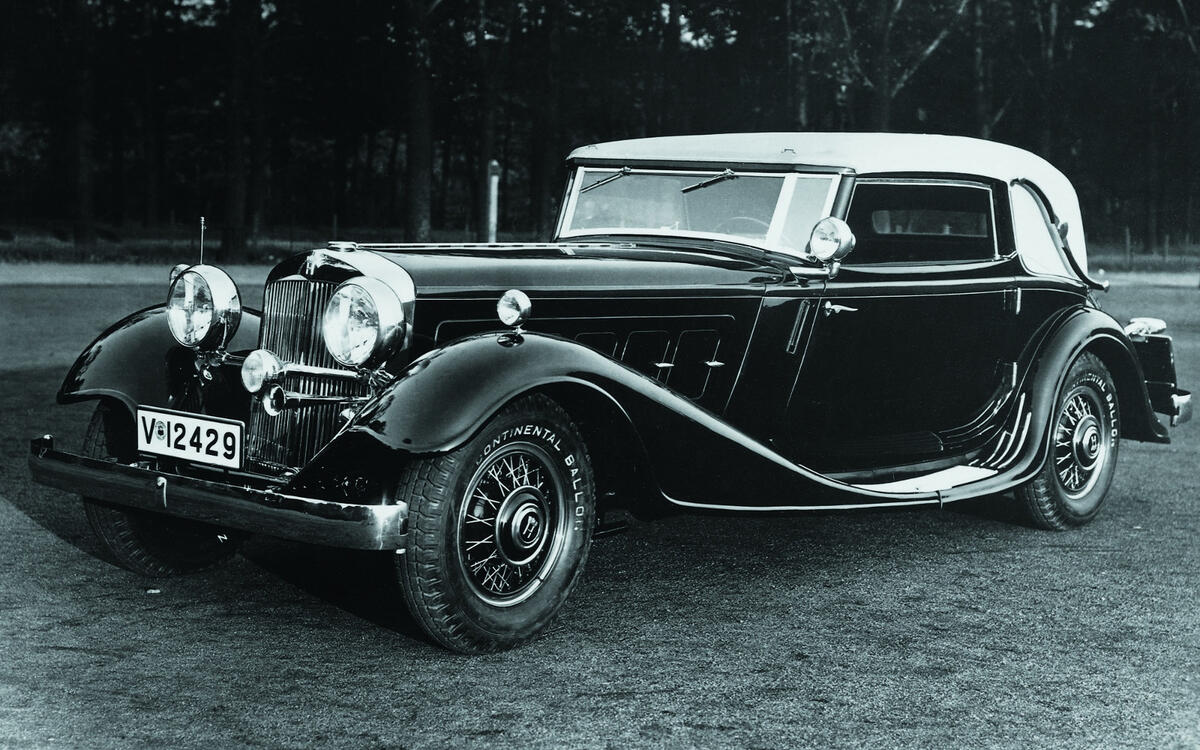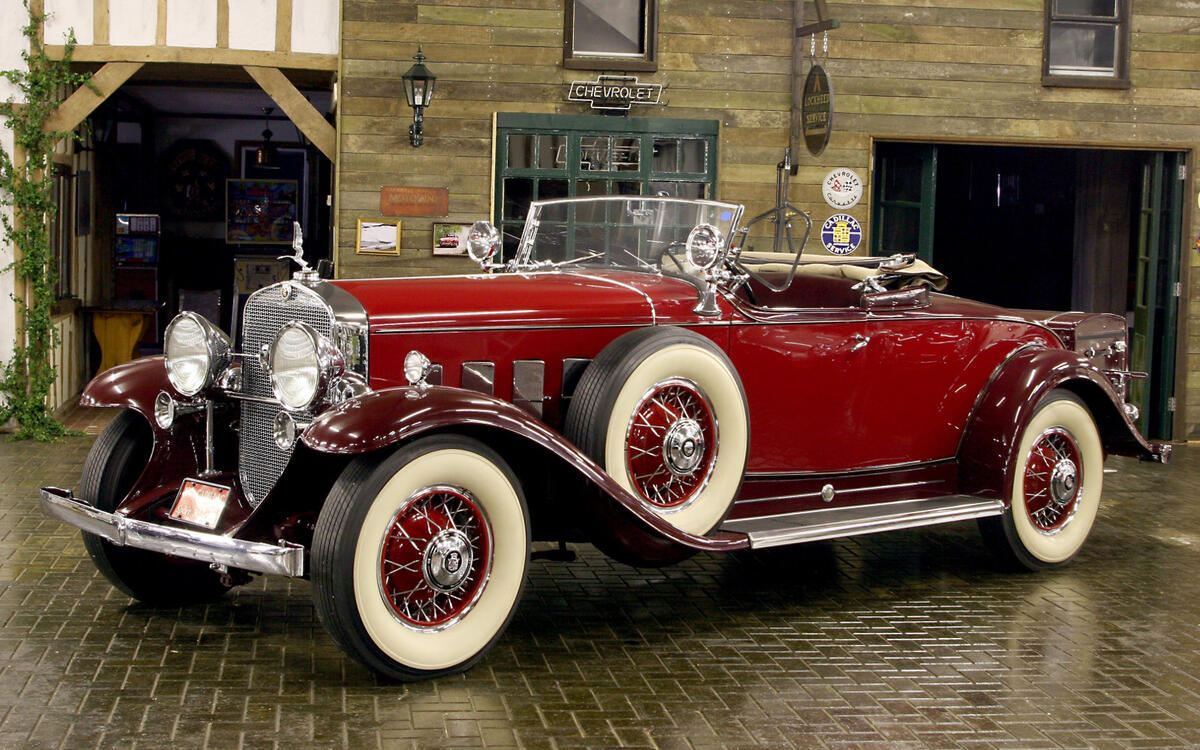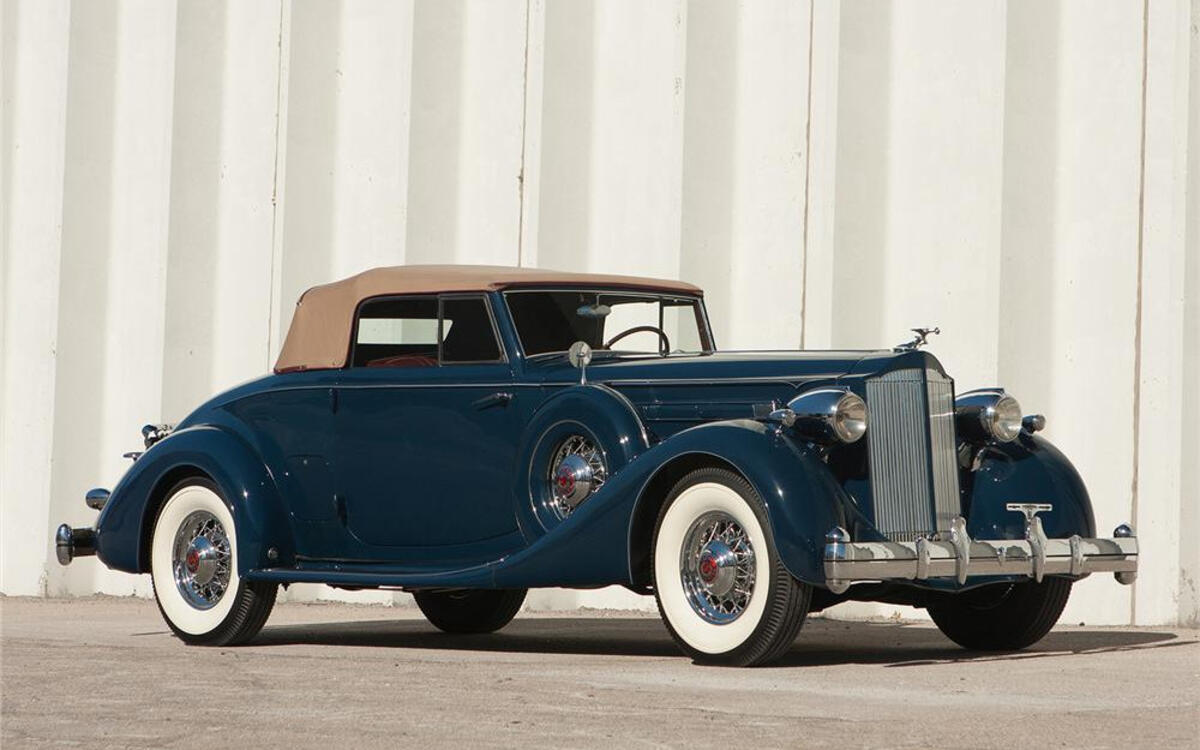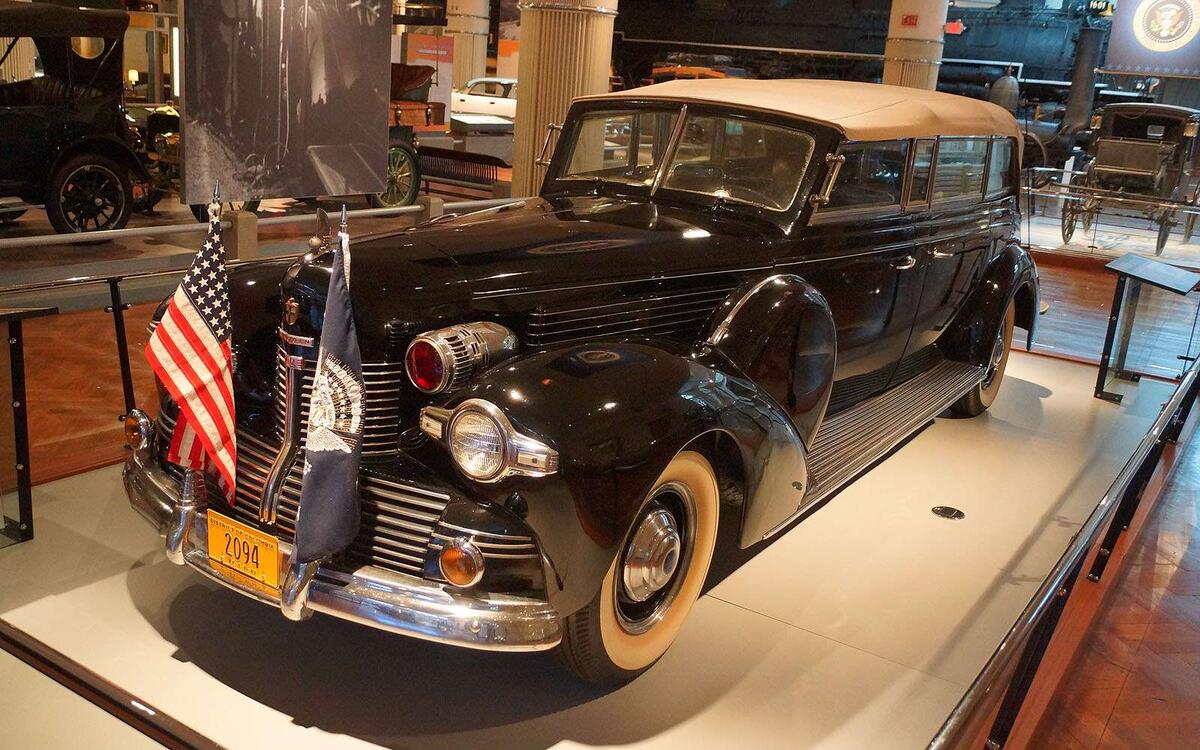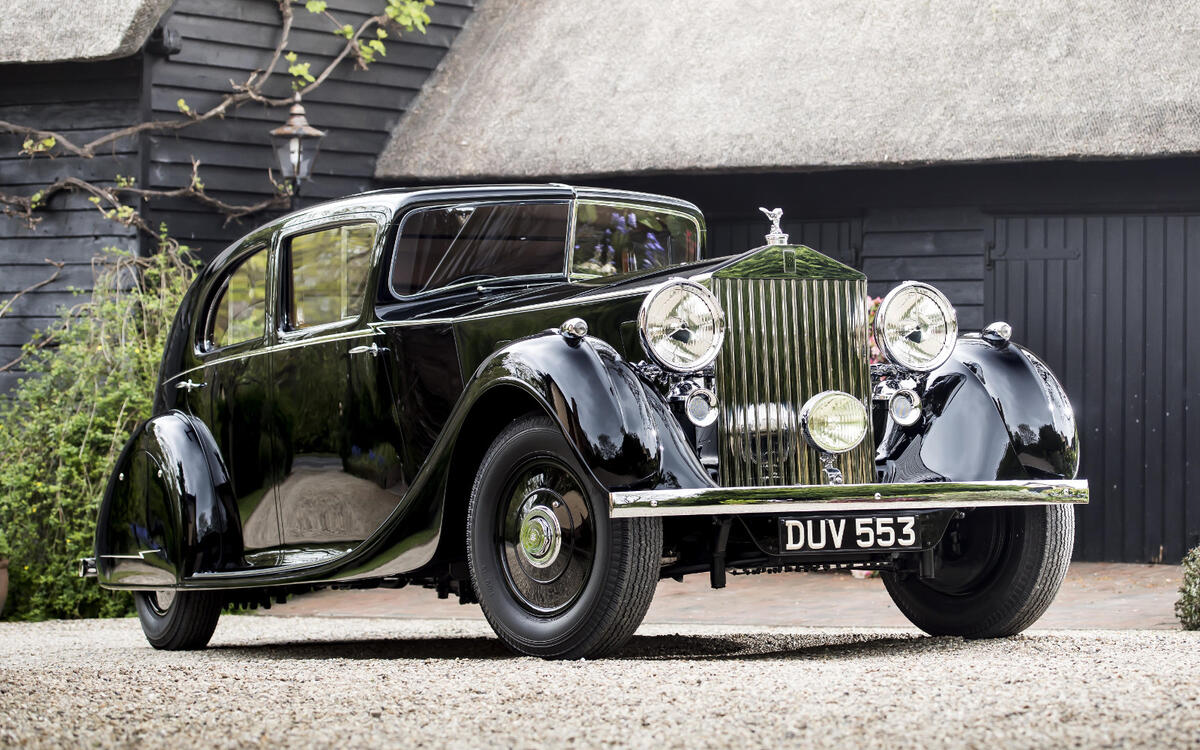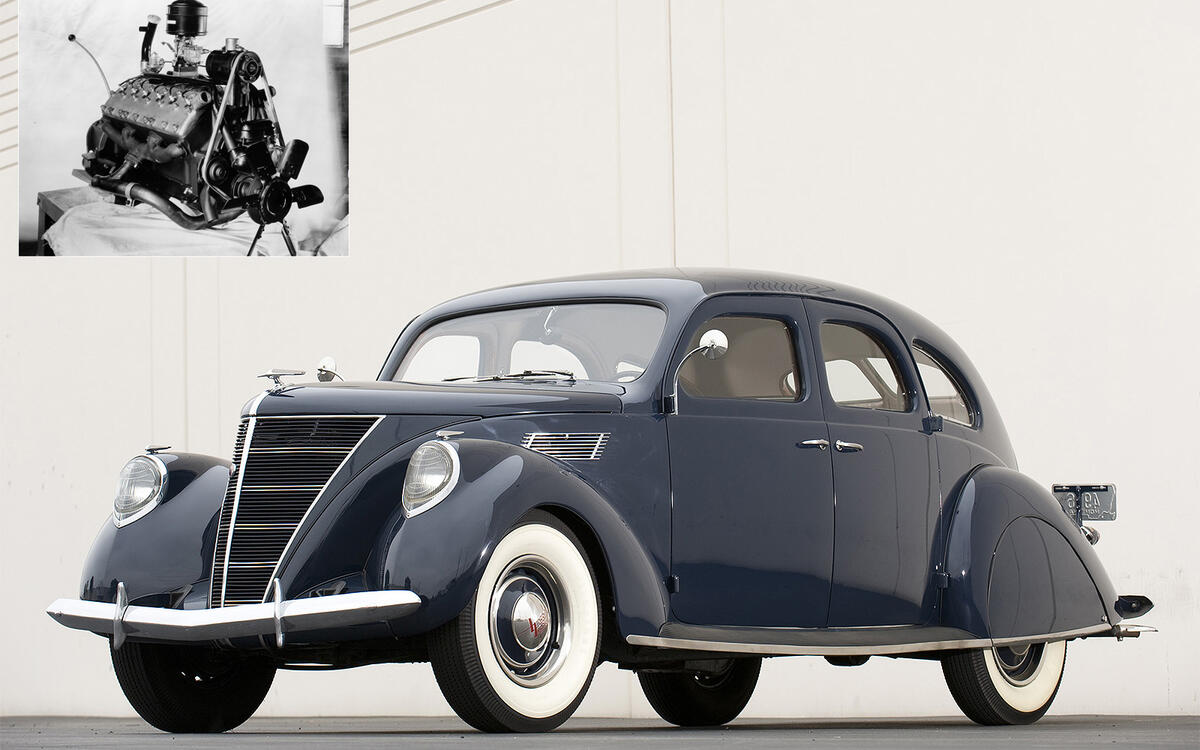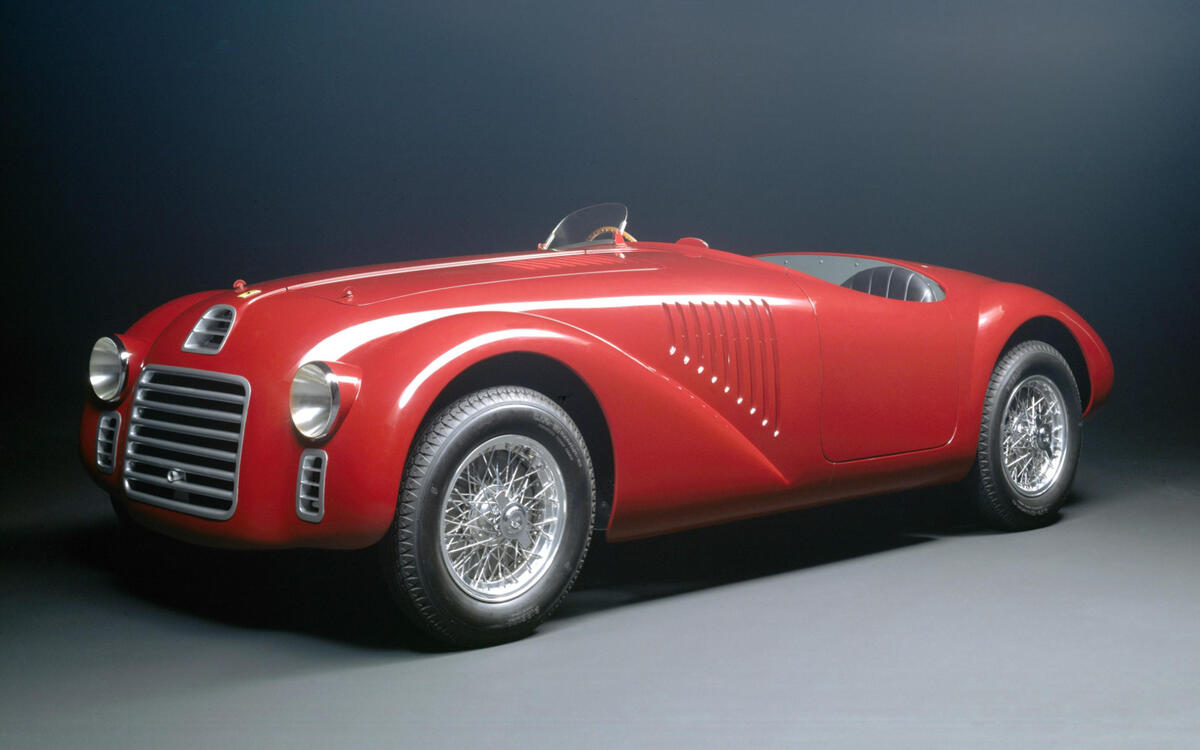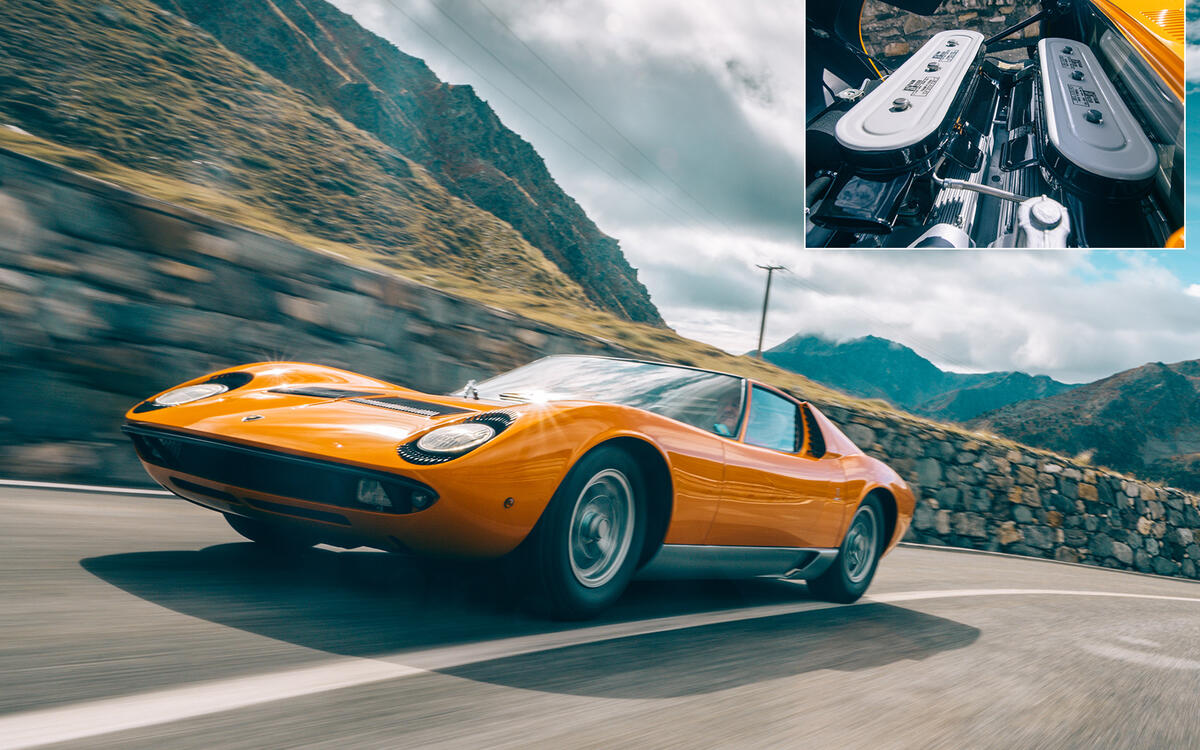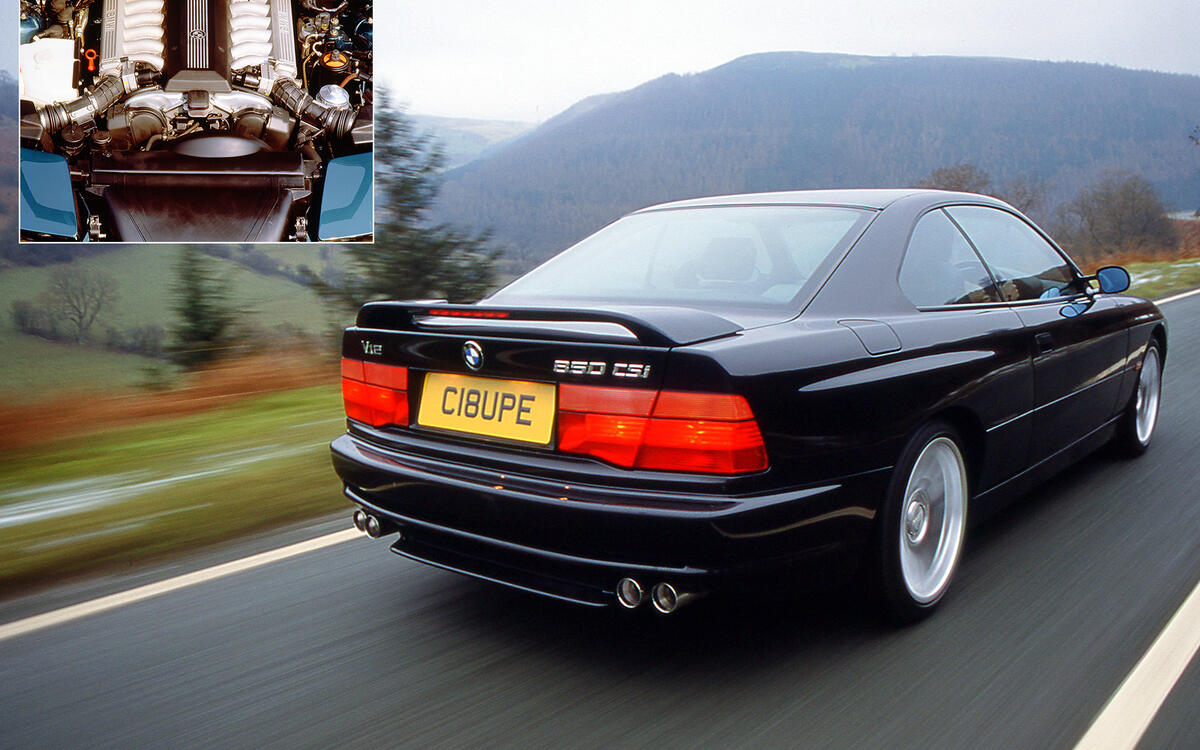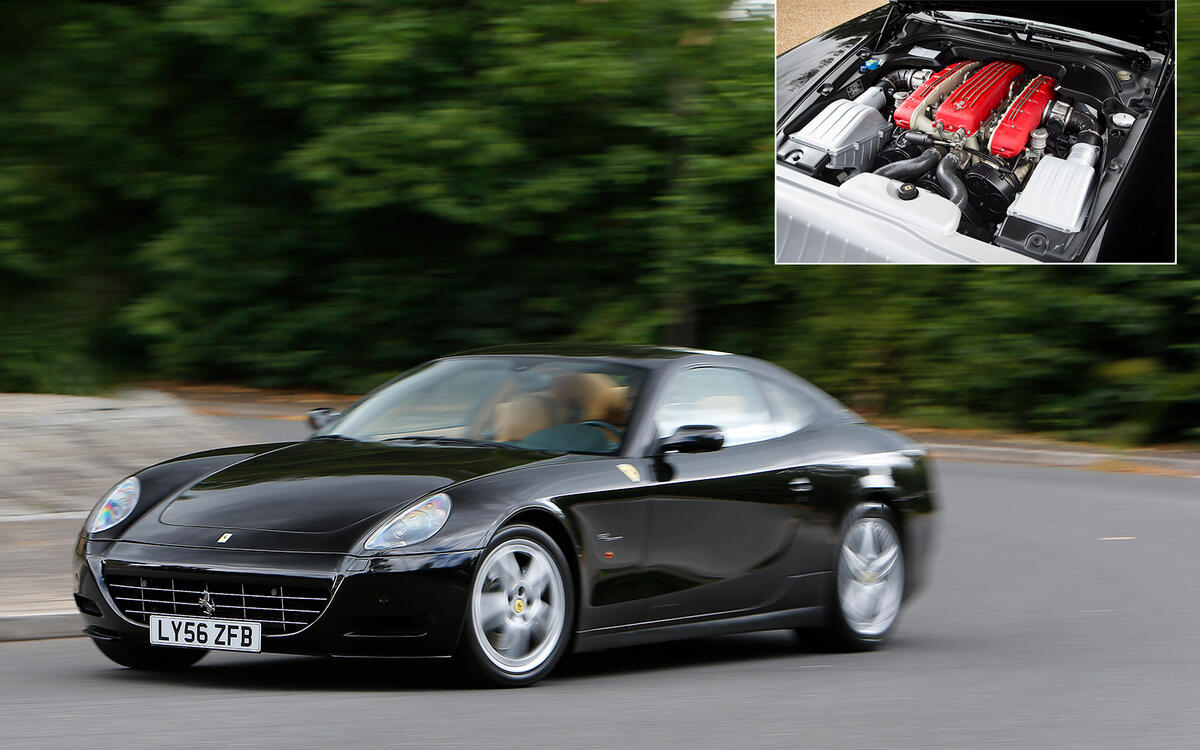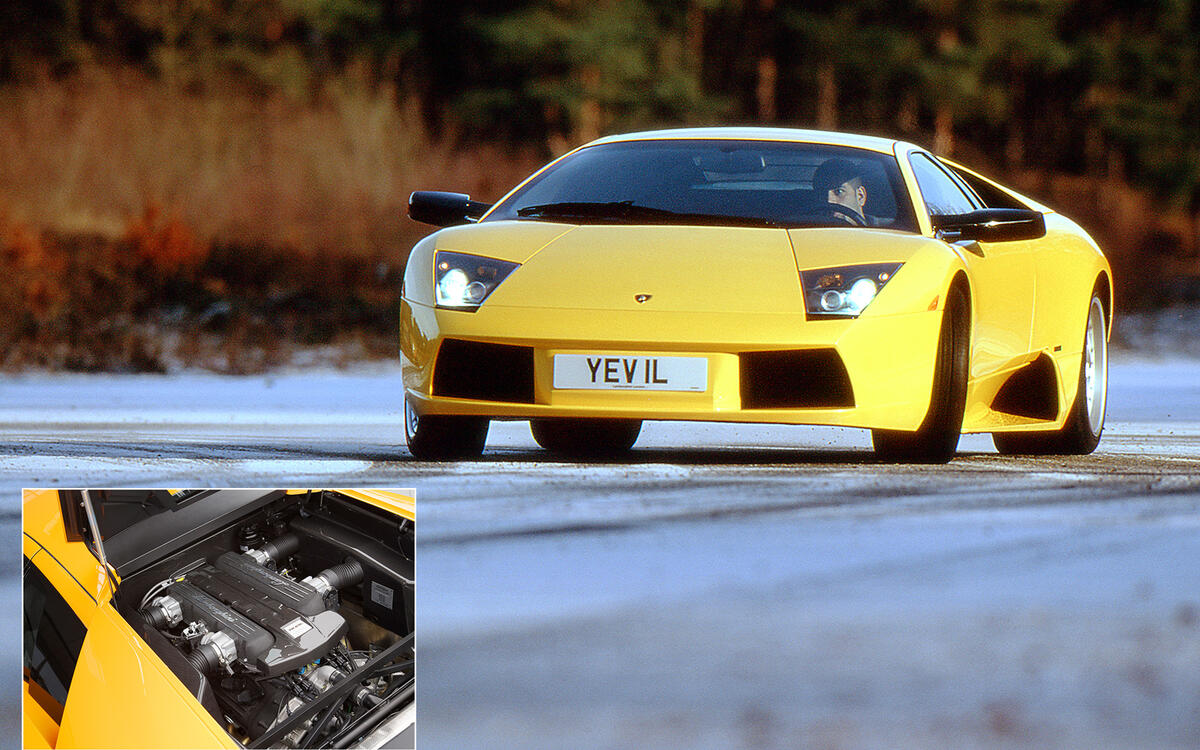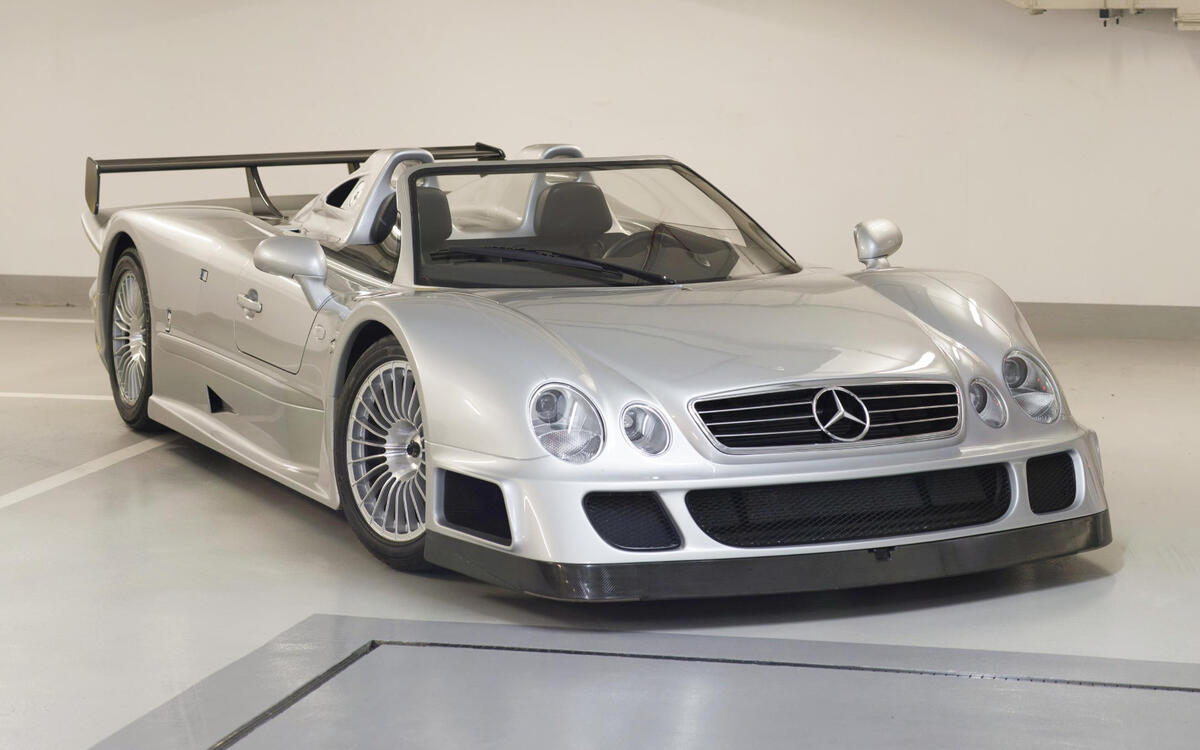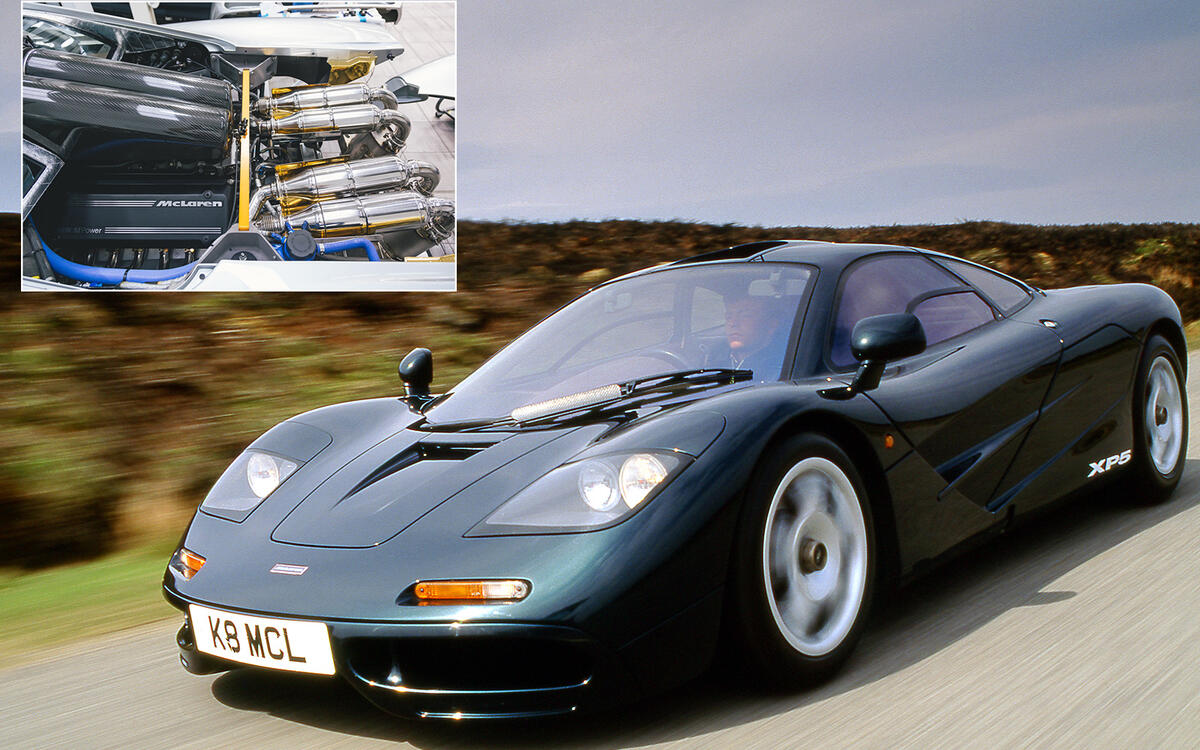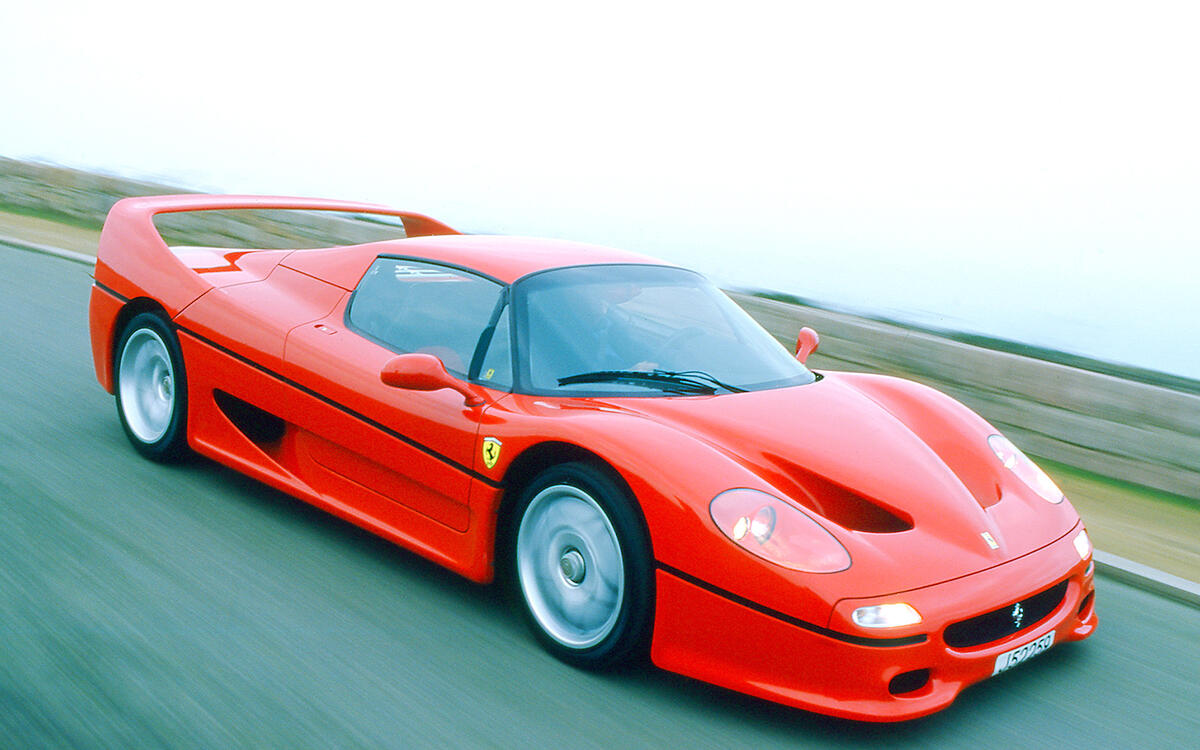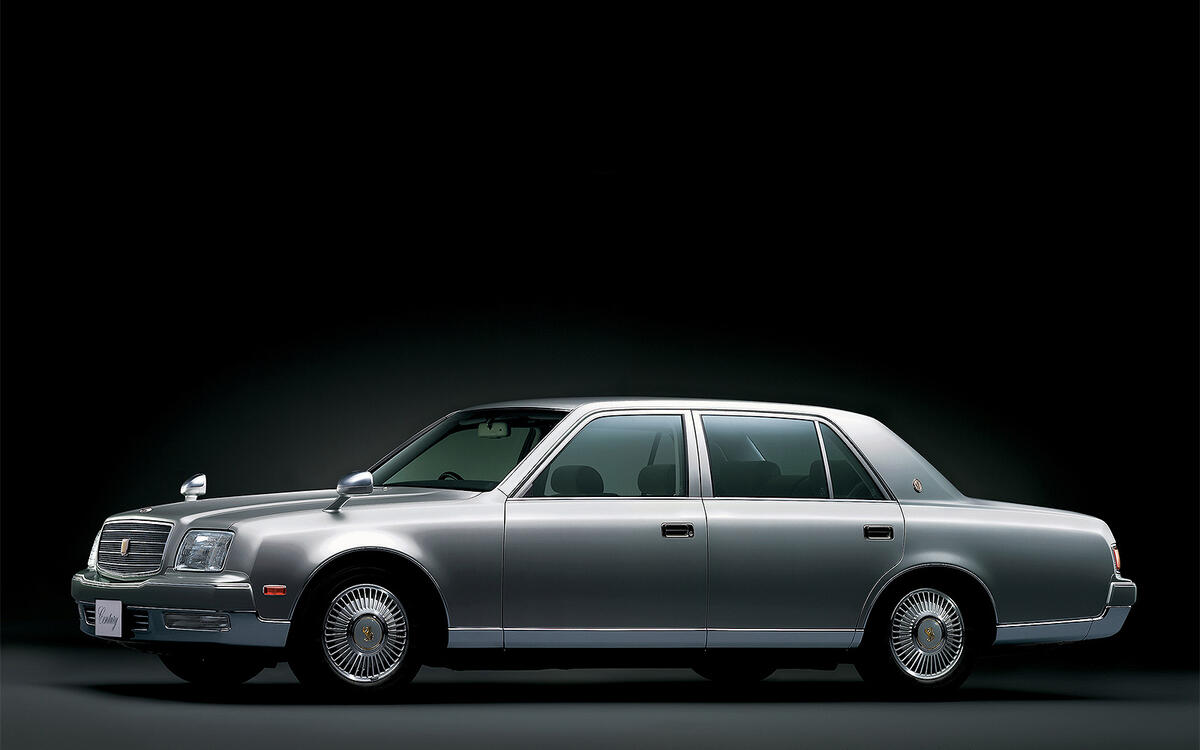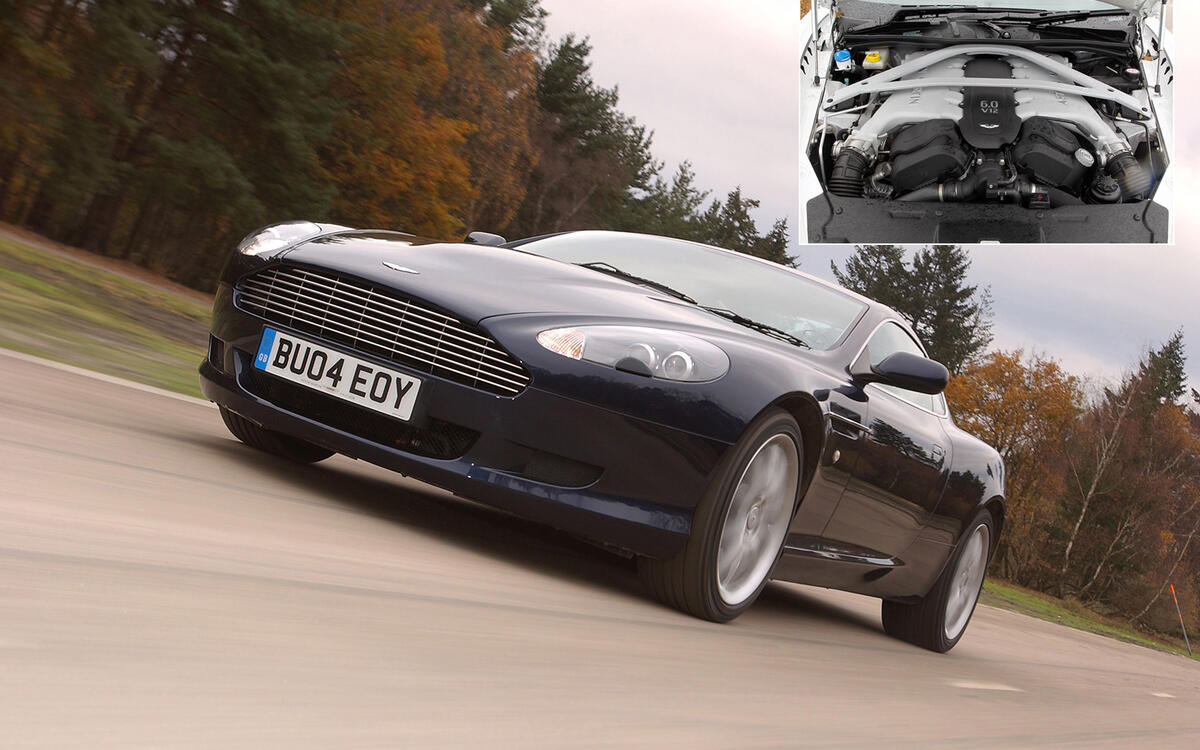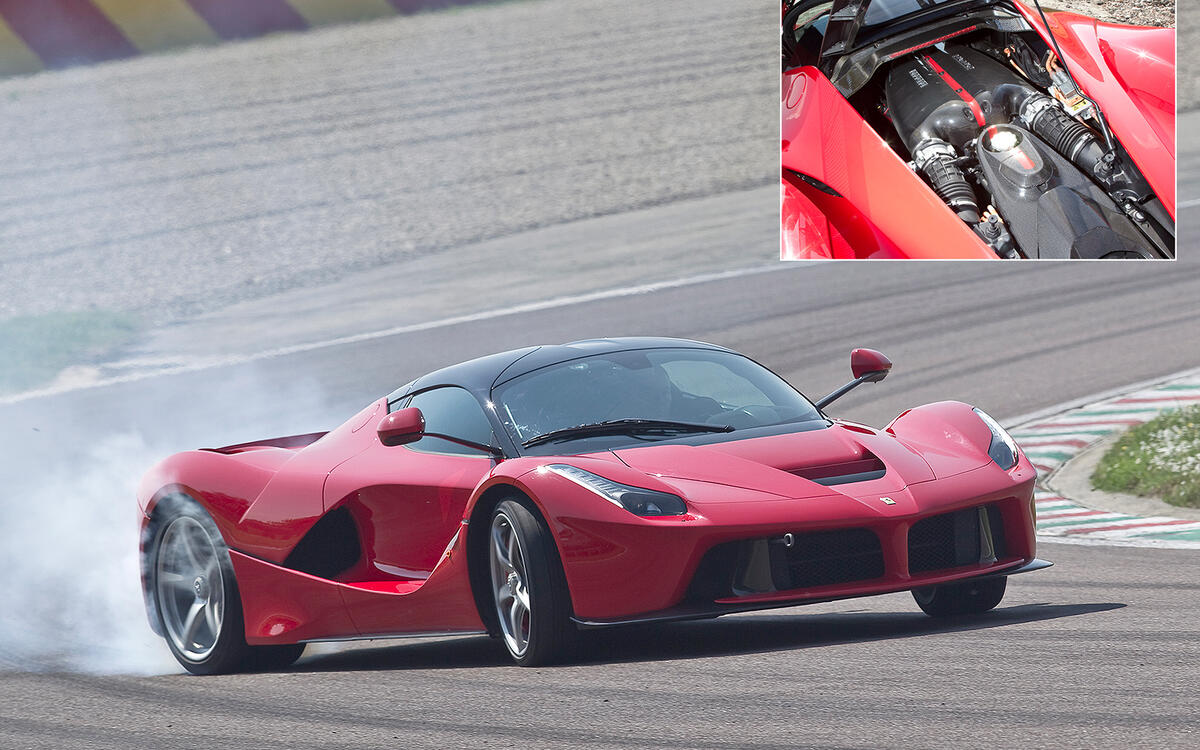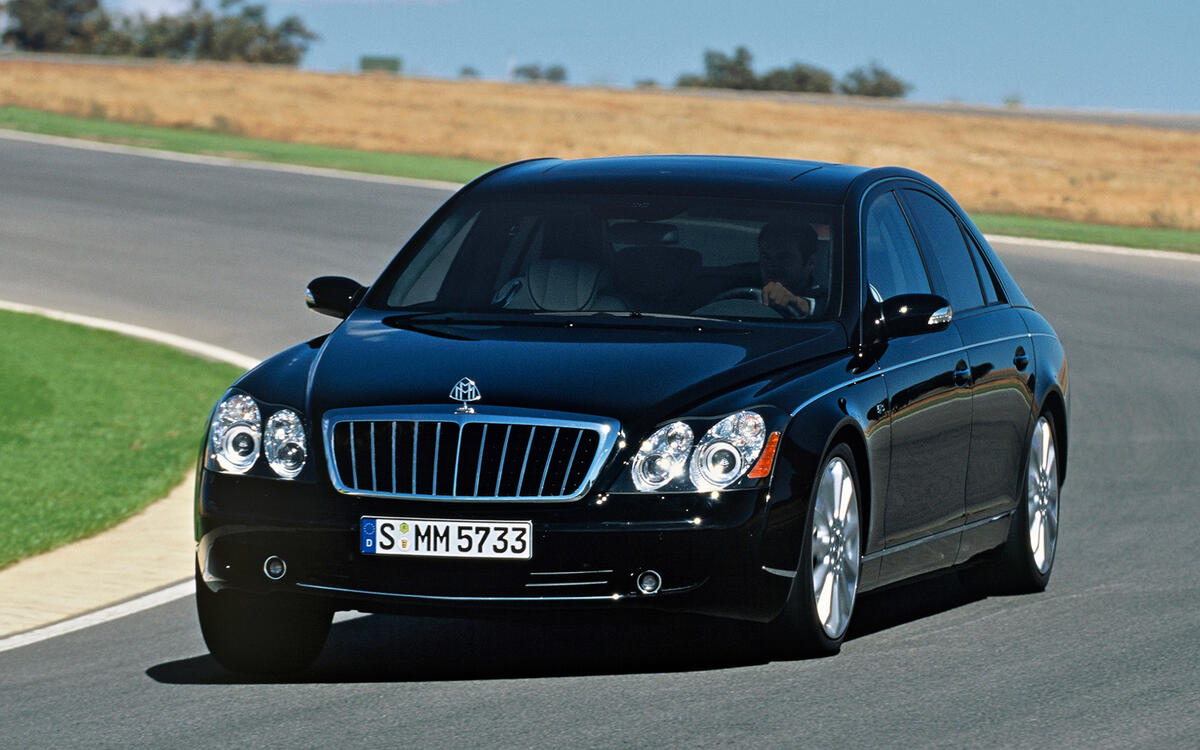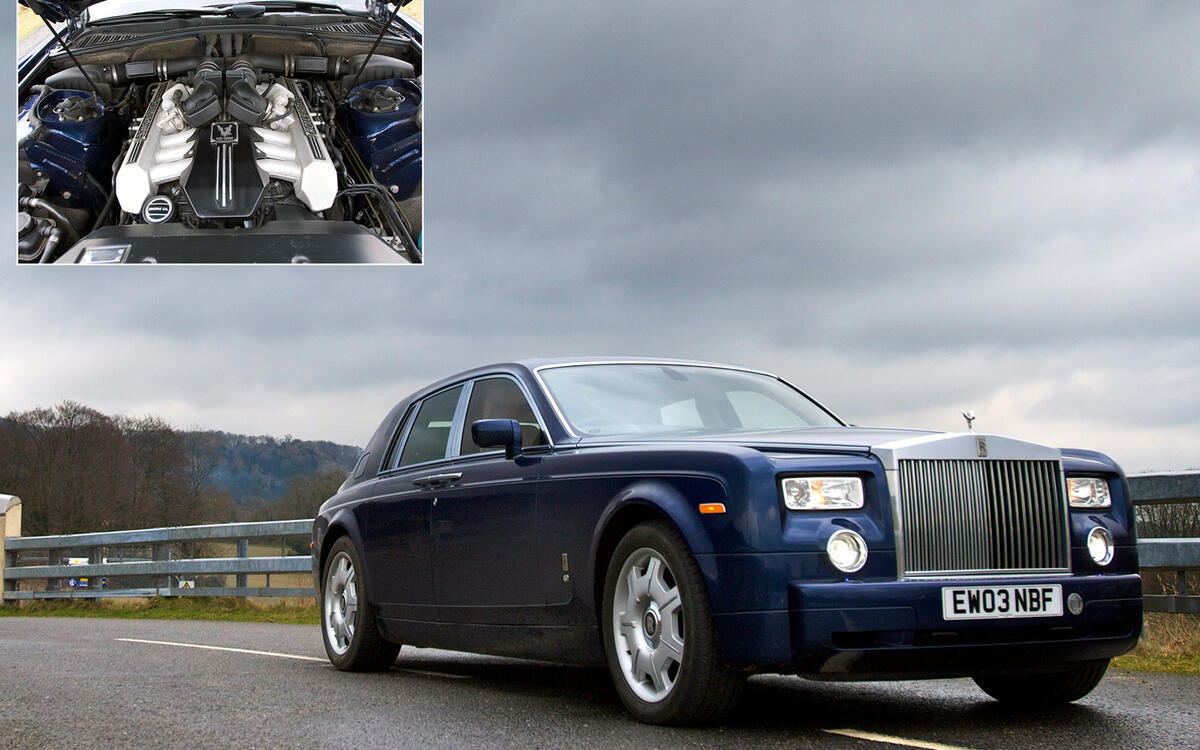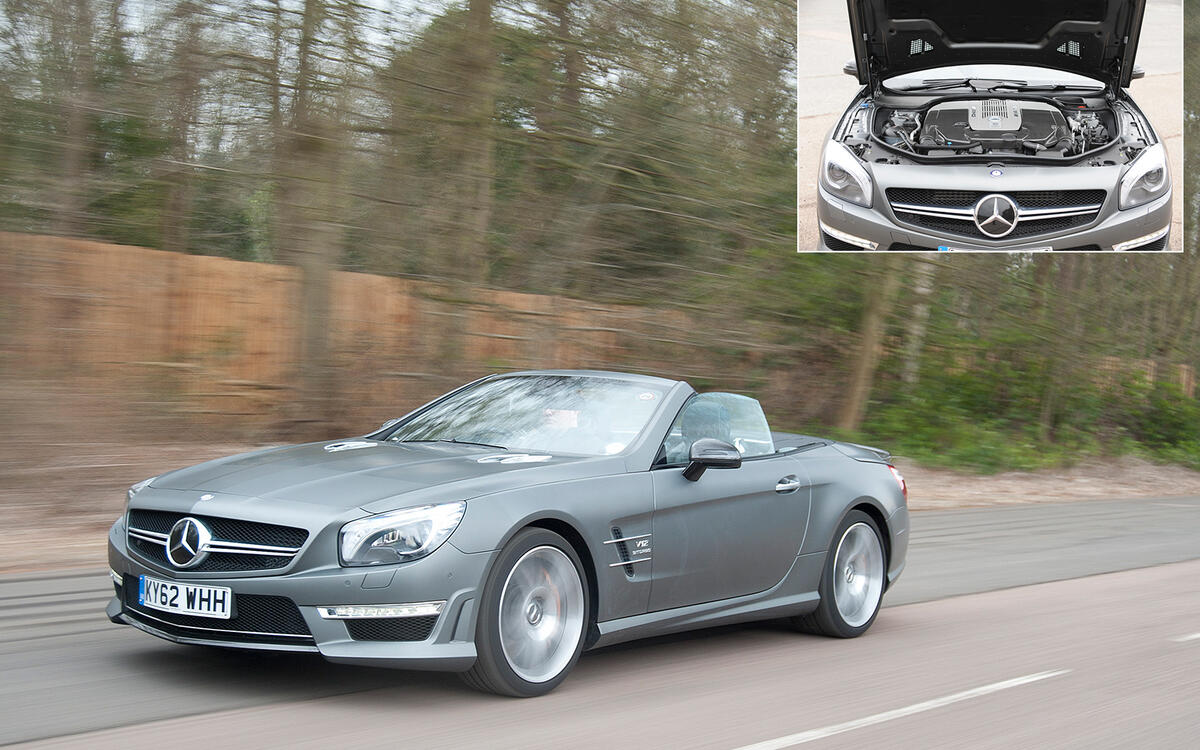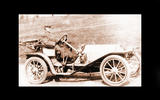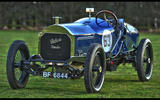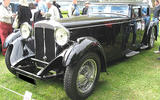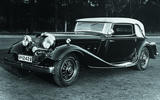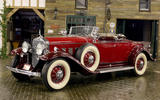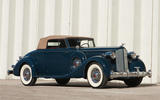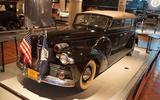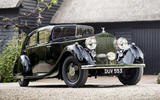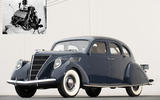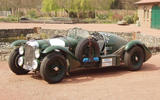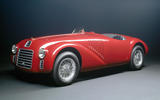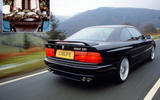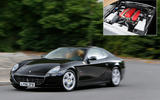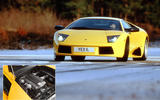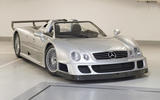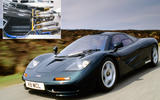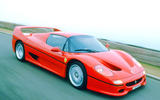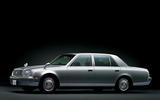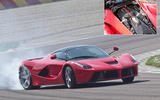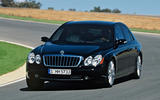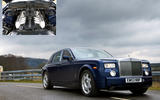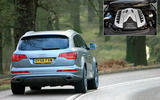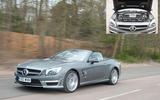 Slide of
Slide of
Car manufacturers have for long sought a compromise between performance and refinement.
They have often chosen the V12 engine layout, with two banks of six cylinders sprouting at an angle from a common crankcase. The economy and emissions benefits – at least on official tests – of having an engine with fewer cylinders and one or more turbos instead mean that the V12’s days appear to be numbered, but the layout has fallen and revived in the past and may do so again.
Here is a selection of ‘real’ V12s covering just over a century. Flat 12s and W12s are not included to avoid offending the purists…
 Slide of
Slide of
The beginnings
The first V12 engine was the 155bhp 18.3-litre Craig-Dörwald, named after the owners of the Putney Motor Works which built it for powerboat racing in 1904.
Four years later, with the assistance of Philip Schmoll, carburettor pioneer George Schebler of Indianapolis built a roadster with a Marion chassis and a V12 engine of his own design (pictured). It was not only the first V12 car but the first with cylinder deactivation. Since only one example was built, Schebler does not get the credit for putting a V12 into series production.
 Slide of
Slide of
Packard Twin Six
To the annoyance of Sunbeam’s Louis Coatalen, who had wanted to get there first, Packard gave the V12 its production debut in the Twin Six of 1915.
Other American manufacturers quickly followed, creating an explosion of interest in V12s. It didn’t last long. The depression of the early 1920s killed the trend almost stone dead, and straight-eights became the engines of choice in fast and luxurious cars.
 Slide of
Slide of
Daimler Double Six
Europeans took much longer than Americans to become interested in V12s. One of the first east of the Atlantic was the British Daimler Double Six, which went on the market in 1927.
Its 7.1-litre sleeve-valve engine, designed by Laurence Pomeroy, was extraordinarily flexible. “It is quite possible,” we wrote about the Double Six in period, “for a passenger, whilst the car is travelling dead slow on top gear, to get out of the car, walk round it and get in it again.”
 Slide of
Slide of
Horch
Now buried within the organisation known today as Audi, Horch was a premium German brand for the first forty years of the 20th century. Its only V12 cars were the Type 670 introduced in 1930 (pictured) and its longer-wheelbase equivalent, the Type 600.
The Horchs were successful rivals to the contemporary eight-cylinder Mercedes 770, but they were dropped late in 1933 after the company was merged with Audi, DKW and Wanderer to create Auto Union. Horch never built a V12 after that.
 Slide of
Slide of
Cadillac
Even in the Great Depression there were still people with enough money to make V12s viable for American manufacturers in the 1930s. Cadillac’s engine, launched in 1931, was a shortened version of an even more extravagant V16.
Cadillac has attempted to develop other V12-engined cars from the late 1960s to as recently as 2008, but it has not had one on sale since 1937.
 Slide of
Slide of
Packard Twelve
Packard returned to V12s in 1932 and was able to keep its new unit in production until the end of the decade. The Packard Twelve – initially given the old Twin Six name – used an enlarged 7.3-litre version (later expanded again to 7.8 litres) of an engine originally intended for a front-wheel drive model which never went on sale.
One Packard Twelve limousine ended up in unlikely hands. Joseph Stalin received it as a gift from then US President Franklin D Roosevelt in 1935. This quintessential symbol of American capitalism was said to be the Soviet leader’s favourite car.
 Slide of
Slide of
Lincoln Model K
Lincoln worked hard on V12s in the 1930s. It added a 7.3-litre example to its Model K range in 1932, quickly replaced it with a lighter and simpler 6.3 in 1933 and then enlarged this to 6.8 litres in 1934.
In this last form, the V12 remained in production for a few years before collapsing sales forced Lincoln to stop building it in 1939. The car pictured above is the Model K-based ‘Sunshine Special’ built for President Roosevelt, which now resides at the Henry Ford museum in Dearborn, Michigan.
 Slide of
Slide of
Rolls-Royce Phantom III
From the first decade of the 20th century until 1998, the only V12-engined model produced by Rolls-Royce was the Phantom III of the mid to late 1930s.
Introduced in 1936, it was by far the most complex Rolls-Royce yet and very difficult to service, a situation not helped by the fact that there was no official workshop manual. The North Carolina-based Phantom III Technical Society, formed in 1971, spent twelve years producing one of its own, which runs to 34 volumes.
The car pictured, with unusual windscreen, was owned by the famed British wartime commander Field Marshal Montgomery.
 Slide of
Slide of
Lincoln Zephyr
Lincoln introduced the mid-range Zephyr as an alternative to the more expensive Model K in 1936. It was successful for a number of reasons, one being that it was the only V12 in a class of cars otherwise powered by eight-cylinder engines.
The 4.4-litre V12, which shared several components with a slightly earlier Ford V8, had some design flaws, but this did not prevent it from remaining in production until 1948. British sports car manufacturers such as Allard and Atalanta also used it as a cheap source of plentiful power.
 Slide of
Slide of
Lagonda
Rolls-Royce’s decision to introduce a V12 engine inspired Lagonda to do the same. This 4.5-litre unit, designed by a team led by W.O. Bentley, was quite high-revving by the standards of its day and produced a very healthy 157bhp in standard form while still being refined enough for a luxury car. With modifications it was powerful enough to give Lagonda third and fourth places in the 1939 Le Mans 24 Hour race.
The engine was very short-lived. Bentley decided that there would be no market for a V12 after the Second World War, “but how wrong I was!” he later said.
 Slide of
Slide of
Ferrari Colombo
Enzo Ferrari had been an enthusiast of V12s since the days of the Packard Twin Six, so it was appropriate that the first Ferrari-badged car, the 125 S of 1947 (pictured), had a V12 engine, even if it was one of the smallest ever built at just 1.5-litre in size.
Designed by Gioacchino Colombo, it remained in production for over four decades. After many enlargements and redesigns, it was still being used in the Ferrari 412i as late as 1988.
 Slide of
Slide of
Lamborghini
The very first road car produced by tractor manufacturer Ferruccio Lamborghini had a V12 engine. Designed by Giotto Bizzarrini, it appeared first in 3.5-litre form in the 1964 350GT, and two years later, now at 3.9 litres, powered the Miura (pictured), widely regarded as the first mid-engined supercar.
With much development and continual size increases to an eventual 5.2 litres, it was still around to power the Lamborghini Countach, which remained in production until 1990.
 Slide of
Slide of
Jaguar
Although Jaguar started thinking about a V12 engine in the early 1950s, and built many prototypes thereafter, it did not put one into production until 1971, when its 5.3-litre unit made its debut in the E-Type. The company was being cautious here; it wanted to introduce the engine in a low-volume sports car rather than one of its more important saloons.
Saloon V12s followed quickly, though. The XJ12 and the mechanically identical Daimler Double Six (named after the 1920s model) arrived in 1972. With the usual increases in capacity and improvements in technology, the V12 soldiered on until 1997. The engine was fabulously smooth in operation, though like most V12s it had a prodigious thirst for fuel.
 Slide of
Slide of
BMW M70
BMW made two attempts to design V12 engines in the 1970s, but neither was thought to be suitable for production. The M70, whose block and cylinder head were both made of aluminium, achieved the ideal balance of performance, refinement and low weight.
It first appeared in the 1987 BMW 750i - which had an even front-rear weight distribution and was one of the first German saloon cars to be governed to a maximum speed of 155mph – and later in the 850i (850CSi derivative pictured).
 Slide of
Slide of
Ferrari F116/F133
The F116 V12 and its higher-performance derivative, the F133, were used in a variety of front-engined Ferraris over nearly two decades. The first was the 456, launched in 1992, and the last was the 612 Scaglietti (pictured), which remained in production until 2011.
In between, examples of either 5.5 or 5.7 litres were used in the 550 and the 575M. A six-litre version producing 597bhp was created for motorsport use only.
 Slide of
Slide of
Lamborghini Diablo and Murciélago
Although many sources insist that these cars used a development of the Lamborghini V12 designed in the 1960s, motoring historian Karl Ludvigsen has pointed out that they actually used an engine originally intended for the LM004 off-road prototype.
Starting out at 5.7 litres in the Diablo, it reached a peak of 6.5 litres and 661bhp in the final version of the Murciélago, which we described as the “Sant’Agata sledgehammer” in reference to the town where Lamborghini has its headquarters.
 Slide of
Slide of
Mercedes-Benz M120/M297
Like BMW and Jaguar, Mercedes spend a long time considering V12s before actually putting one into production. The S-Class 600 of 1991 was the first car to use the new M120 unit. It was noticeably faster than its BMW 750i rival, and very much more expensive.
The M297 was an M120 modified by AMG and enlarged to 6.9 litres for use in road and race versions of the Mercedes CLK GTR (pictured). Other versions with sizes of up to 7.3 litres and outputs of up to 750bhp powered the Pagani Zonda.
 Slide of
Slide of
BMW S70/2
Loosely based on the M70 V12, the S70/2 was the engine BMW supplied to McLaren for its F1 model of 1992-1998, a car we described as “the finest driving machine yet built for the public road”.
Without the benefit of turbocharging or supercharging, the S70/2 produced 618bhp from 6.1 litres, and actually had to be detuned to allow the F1 to compete in the 1995 Le Mans 24 Hour race, which it won.
 Slide of
Slide of
Ferrari F50
The F50 was the only road-going Ferrari to use a V12 engine otherwise found only in racing cars. The F130B started out as a 3.5-litre fitted to the 641 F1 car driven in 1990 by Nigel Mansell and Alain Prost, and was then enlarged to 4.0 litres and detuned for the 333 SP sports racer.
By the time it appeared in the F50, it had grown to 4.7 litres and its power output had dropped from the 680bhp or so of the 641 to 520bhp – still an impressive figure for a road-legal car of the mid 1990s.
 Slide of
Slide of
Toyota Century
Almost unknown outside Japan, the Century is a limousine which has been produced in three generations. The first had a V8 engine, as the current one does (helped by an electric motor), but the second, on sale from 1997 to 2017, was fitted with Toyota’s 1GZ-FE V12.
Measuring five litres and with an official output of 276bhp, it has never been used for any other purpose than to power the Century.
 Slide of
Slide of
Aston Martin
The V12 engine which first appeared in the Aston Martin DB7 in 1999 was derived by Ford (which owned Aston at the time) from the Duratec V6 engine which was created partly with the assistance of Porsche. The Duratec appeared first in the Mondeo and was later used in other Fords and by Lincoln, Jaguar, Mazda, Mercury and Noble.
The V12 was carried over to the Vanquish and the DB9 (pictured above) but was abandoned in favour of new engines for the DB11.
 Slide of
Slide of
Ferrari F140
The F140 V12 made its debut in the 2002 Ferrari Enzo and continues in production to this day. Originally a six-litre producing 651bhp, its size and maximum output have increased to 6.5 litres and 789bhp in the LaFerrari (pictured) and the current 812 Superfast.
The F140 is also the only V12 engine ever fitted to a Maserati road car. The short-lived MC12 used it in 6.0-litre form with a lower output of around 620bhp. Much more powerful MC12s were also built, but not for road use.
 Slide of
Slide of
Mercedes-Benz M275
The M275 is a 5.5-litre twin-turbocharged V12 which first appeared in the ultimate models of the S-, SL- and CL-Class ranges in 2003. It has led to several other engines in the same family, including a six-litre unit with outputs of over 600bhp found in high-performance AMG models and another 5.5 called the M285 and intended specifically for the Maybach 57 (pictured) and 62 limousines.
A further development is the 720-plus bhp M158 which Mercedes supplies to Pagani for the Huayra supercar.
 Slide of
Slide of
BMW N73/N74
The N73 was a direct fuel injection replacement for the M73, available as a six-litre in the BMW 7-Series and a 6.75 in the Rolls-Royce Phantom (pictured) from 2003. The larger capacity neatly matches that of the otherwise unrelated V8 engine used for many years in Rolls-Royce and Bentley models.
Its twin-turbo successor, the N74, powers the BMW M760Li xDrive and all vehicles in the current Rolls-Royce range.
 Slide of
Slide of
Audi Q7 V12 TDI
Nearly every production V12 engine has run on petrol, as you might expect. The exception is the 6.0-litre diesel created by Audi for the Q7 SUV. Producing 493bhp, it could push this 2635kg car from rest to 62mph in just 5.5 seconds.
Noting that it cost £44,000 more than the second most expensive Q7, we reported that it was “a guilty pleasure”, though also “remarkably satisfying” to drive.
 Slide of
Slide of
Mercedes-Benz M279
The M279 is a heavily revised version of the M275 mentioned previously, with a capacity of six litres and power outputs ranging from 523bhp to 621bhp.
It first appeared in 2012 under the bonnets of the SL65 AMG (pictured) and the spectacular G65 AMG off-roader, and has since been used in several other AMG and Maybach models.
 Slide of
Slide of
Aston Martin DB11
The Ford-based V12 which had served Aston Martin so well since the days of the DB7 was finally superseded by a new in-house engine for the DB11 (pictured). The 5.2-litre unit is the first turbocharged engine ever fitted to a production Aston, the second being a four-litre Mercedes V8 which joined the DB11 range a year after the V12’s launch in 2016.
In standard form, the V12 produces a maximum of 600bhp, but in the DBS Superleggera (“an outstanding super-GT,” we called it) it produces a far more muscular 715bhp.
If you enjoyed this story, sign up to Autocar’s newsletter for all the best car news, reviews and opinion direct to your inbox. Click here to subscribe.
Category:
Sports car

